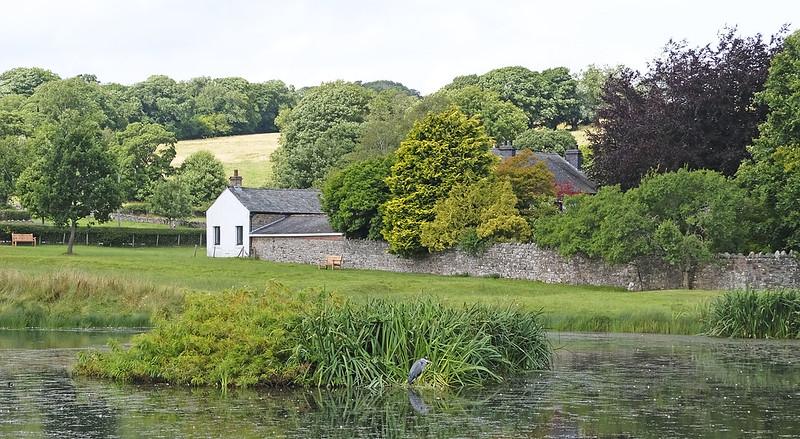Updated 02/11/2025
Key Takeaways for Samuel Taylor Coleridge
- Samuel Taylor Coleridge’s years in Cumbria’s Lake District (1800–1804) deeply inspired his Romantic poetry and philosophical ideas.
- The Lake District poetry tradition established by Coleridge and the Lake Poets continues to attract visitors worldwide.
- Essential travel tips: visit Greta Hall (Keswick), the Keswick Museum, and the Wordsworth Trust at Dove Cottage (Grasmere).
- Recommended walks: scenic trails around Derwentwater, Skiddaw, and Catbells, plus a downloadable literary walk guide is available.
- Museum highlights: Armitt Museum in Ambleside, Keswick Museum’s Lake Poets displays, and the British Library’s digital archives.
- Comprehensive FAQ answers visitor questions about Coleridge’s life, works, collaborations, and practical heritage travel planning.
Introduction to Samuel Taylor Coleridge
Samuel Taylor Coleridge, one of the most significant figures in English literature, found inspiration and solace in the picturesque landscapes of Cumbria. His time in this enchanting region shaped his poetic voice and left an indelible mark on the literary world.
This article explores the life and times of Samuel Taylor Coleridge, the Cumbria connection, the profound influence of Lake District poetry on his work, his enduring literary contributions, and how his legacy continues to resonate in modern culture.
The Life and Times of Samuel Taylor Coleridge in Cumbria
Samuel Taylor Coleridge was born on October 21, 1772, in Ottery St. Mary, Devon, but he truly flourished as a poet and thinker in the Lake District of Cumbria. In 1799, Coleridge moved to the region, drawn by its breathtaking beauty and the company of fellow poet William Wordsworth. The two Lake Poets formed a close friendship that would significantly influence the Romantic movement and Romantic era literature, with Coleridge often seeking refuge in the serene landscapes that surrounded him.

During his time in Cumbria, Coleridge lived in several locations, including the charming house of Greta Hall in Keswick. This residence became a hub of literary activity, where Coleridge hosted discussions with other writers and thinkers. His life in Cumbria was marked by both creative brilliance and personal struggles, including bouts of depression and addiction. Despite these challenges, the tranquillity of the Cumbrian countryside provided him with a sanctuary for reflection and creativity.
Coleridge's experiences in Cumbria were pivotal in shaping his philosophical and poetic ideas. The region's natural beauty inspired him to explore themes of nature, imagination, and the human experience.
His time spent wandering the hills and lakes of the Lake District allowed him to connect deeply with the environment, which would later manifest in his Lake District poetry. The interplay between his life experiences and the landscape around him created a rich tapestry of inspiration that would define his work. As Dr Emma Richardson from the Wordsworth Trust notes, "Samuel Taylor Coleridge's Cumbria residence fundamentally transformed his approach to Lake District poetry, making nature not just a backdrop but an active participant in the creative process."

Ultimately, Coleridge's time in Cumbria was not just a chapter in his life; it was a transformative period that laid the groundwork for his most celebrated works. The friendships he forged, the struggles he faced, and the beauty of the landscape all contributed to a legacy that would resonate through the ages. His life in this idyllic region serves as a reminder of the profound impact that place can have on creativity and artistic expression.
Nature’s Influence: Coleridge’s Connection to the Landscape
The natural world played a crucial role in shaping Coleridge's poetic vision. The stunning landscapes of Cumbria, with its rolling hills, tranquil lakes, and dramatic mountains, provided a backdrop that inspired many of his most famous works. Coleridge's deep appreciation for nature is evident in poems such as "The Rime of the Ancient Mariner," where the sea and its creatures become central characters in a tale of moral and spiritual awakening.
Coleridge's connection to the landscape was not merely aesthetic; it was deeply philosophical. He believed that nature was a reflection of the divine and that the beauty of the natural world could lead to profound insights about existence and the human condition.
This belief is encapsulated in his concept of the "sublime," which describes the overwhelming beauty of nature that can evoke both awe and terror. His experiences in the Cumbrian landscape allowed him to explore these themes in depth, enriching his poetry with layers of meaning.
The Lake District's ever-changing weather and dramatic scenery also mirrored Coleridge's emotional landscape. The tumultuous storms and serene moments he experienced in Cumbria paralleled his internal struggles, providing a canvas for his exploration of the human psyche.
This interplay between nature and emotion is a hallmark of Romantic literature and Lake District poetry, and Samuel Taylor Coleridge's Cumbria legacy exemplifies this connection beautifully. Today, the landscapes that inspired Coleridge remain largely unchanged, inviting visitors to experience the same awe and inspiration he felt.
Walking the trails he once traversed, one can almost hear the echoes of his thoughts and the whispers of his poetry in the rustling leaves and flowing waters. Coleridge's legacy is intertwined with the very fabric of the Cumbrian landscape, reminding us of the profound relationship between nature and creativity.
Literary Contributions: Coleridge’s Enduring Works and Ideas
Coleridge's literary contributions are vast and varied, encompassing poetry, prose, and criticism. His most famous works, such as "The Rime of the Ancient Mariner" and "Kubla Khan," showcase his innovative use of language and form. These poems not only reflect his deep engagement with nature but also explore complex themes of morality, imagination, and the supernatural, making them timeless pieces of literature.
In addition to his poetry, Coleridge was a prolific essayist and critic. His work "Biographia Literaria" is a seminal text in literary criticism, where he articulates his theories on poetry, imagination, and the creative process. This work has had a lasting impact on literary theory and continues to be studied by scholars and students alike. Coleridge's ideas about the role of the imagination in artistic creation have influenced countless writers and thinkers, solidifying his place in the pantheon of literary greats.
Coleridge's exploration of the human experience through his poetry also paved the way for future generations of writers. His ability to blend personal emotion with universal themes resonates with readers, allowing them to find their own experiences reflected in his work. This connection to the human condition is a hallmark of great literature, and Coleridge's contributions have ensured that his voice remains relevant in contemporary discussions about art and life.
As we delve into Coleridge's works, we find a rich tapestry of ideas that continue to inspire and challenge us. His exploration of the interplay between nature and the human spirit invites us to reflect on our relationship with the world around us. Coleridge's literary legacy is not just a collection of poems and essays; it is a living dialogue that encourages us to engage with our creativity and the beauty of the natural world.
Preserving the Legacy: Coleridge’s Impact on Modern Culture
Coleridge's influence extends far beyond the confines of his own time, permeating modern culture in various forms. His works have inspired countless adaptations in literature, theatre, and film, demonstrating the enduring power of his ideas and themes. The haunting imagery and profound insights found in his poetry continue to resonate with contemporary audiences, reminding us of the timeless nature of his work.
In addition to artistic adaptations, Coleridge's philosophical ideas have found their way into modern discussions about creativity and the role of the artist. His belief in the importance of imagination as a driving force in artistic expression has influenced a wide range of disciplines, from psychology to environmental studies.
The notion that creativity is deeply intertwined with our experiences in nature is particularly relevant today, as we grapple with issues of environmental degradation and the need for sustainable living.
Coleridge's legacy is also preserved through various literary festivals and events held in Cumbria, where enthusiasts gather to celebrate his life and work. The annual Keswick Mountain Festival regularly features English poetry walks and dramatic readings of Coleridge's works performed against the stunning backdrop of the fells he once roamed. During the 2024 festival, hundreds of visitors gathered at Friar's Crag on Derwentwater for a sunset reading of 'Kubla Khan,' with one attendee describing it as 'hearing the poet's voice echo across two centuries.' These gatherings not only honour his contributions to literature but also foster a sense of community among those who share a passion for poetry and the natural world. By engaging with Coleridge's legacy in this way, we ensure that his voice continues to inspire future generations.
Ultimately, Coleridge's impact on modern culture serves as a reminder of the power of literature to transcend time and place. His ability to capture the essence of the human experience through the lens of nature and imagination invites us to reflect on our own lives and the world around us. As we explore the inspirational legacy of Coleridge in Cumbria, we are reminded of the profound connections between art, nature, and the human spirit.
The legacy of Samuel Taylor Coleridge in Cumbria is a testament to the enduring power of nature and creativity. His life and work continue to inspire us to seek beauty in the world around us and to explore the depths of our imagination. As we walk the same paths he once tread, we are reminded of the profound impact that place can have on artistic expression and the importance of preserving the natural landscapes that have inspired generations of writers and thinkers. Coleridge's voice remains a guiding light, encouraging us to embrace our creativity and to find inspiration in the beauty of the world.
FAQs about Samuel Taylor Coleridge
Who was Samuel Taylor Coleridge?
Samuel Taylor Coleridge (1772–1834) was an English poet, literary critic, philosopher, and theologian. He was a leading figure of the Romantic movement and is best known for his poems "The Rime of the Ancient Mariner" and "Kubla Khan," as well as his collaboration with William Wordsworth on "Lyrical Ballads."
What are some of Coleridge’s most famous works?
Coleridge's most famous works include:
"The Rime of the Ancient Mariner": A narrative poem about a mariner's harrowing sea voyage and the supernatural events he encounters.
"Kubla Khan": A fragmentary poem inspired by a dream, describing the opulent palace of the Mongol emperor Kublai Khan.
"Christabel": An unfinished gothic ballad.
"Biographia Literaria": A critical work that combines literary criticism and autobiography, outlining his philosophical views on literature and poetry.
What was Coleridge’s role in the Romantic movement?
Coleridge was a central figure in the Romantic movement, which emphasised emotion, nature, and individualism as key themes in art and literature. Along with William Wordsworth, he helped to define the movement through their collaborative work "Lyrical Ballads," which marked a departure from the formal styles of the 18th century and introduced a new emphasis on personal experience and the natural world.
How did Coleridge’s relationship with Wordsworth influence his work?
Coleridge and Wordsworth had a close friendship and collaboration that significantly influenced both poets' work. Their collaboration on "Lyrical Ballads" was pivotal in establishing the Romantic movement in England. Coleridge's ideas about poetry, particularly his belief in the imagination as a powerful creative force, were deeply intertwined with Wordsworth's focus on nature and the ordinary experiences of life.
What is “Kubla Khan” about?
"Kubla Khan" is a poem that describes the construction of an elaborate palace by the Mongol emperor Kublai Khan in the city of Xanadu. The poem is known for its vivid and dreamlike imagery, and it reflects Coleridge's fascination with the power of imagination. The poem was famously composed after Coleridge awoke from an opium-induced dream, although it was left unfinished.
What is “The Rime of the Ancient Mariner” about?
"The Rime of the Ancient Mariner" is a long narrative poem that tells the story of a mariner who, after killing an albatross, experiences a series of supernatural events and is forced to wander the earth, recounting his tale as a form of penance. The poem explores themes of sin, guilt, and the natural world, and it is one of Coleridge's most famous and influential works.
Where did Samuel Taylor Coleridge live in the Lake District?
Samuel Taylor Coleridge lived at Greta Hall in Keswick, Cumbria, from 1800 to 1804. This historic house, overlooking Derwentwater, became a hub of literary activity where Coleridge entertained fellow Romantic poets and wrote some of his most important works. Today, visitors can explore the area and see where this literary giant found his inspiration in the stunning Lake District landscape.
What poems did Coleridge write in the Lake District?
While living in Cumbria's Lake District, Coleridge wrote several of his most celebrated works, including "Dejection: An Ode" (1802), portions of "Christabel," and developed ideas for "The Rime of the Ancient Mariner." The region's dramatic landscapes, from Keswick's misty mountains to Derwentwater's tranquil shore, profoundly influenced his Romantic poetry and philosophical writings about nature, imagination, and the sublime.
Can you visit Coleridge’s house in Keswick today?
Greta Hall, where Coleridge lived from 1800-1804, is now part of Keswick School and not regularly open to the public. However, you can still view the exterior of this historic building and explore the surrounding areas that inspired his work. The Keswick Museum has exhibits on Coleridge and other Lake Poets, and walking tours often include stops at significant Coleridge locations throughout the Lake District.
How did the Lake District landscape influence Coleridge’s poetry?
The Lake District's rugged mountains, serene lakes, and dramatic weather profoundly influenced Coleridge's Romantic poetry. The landscape inspired his concept of the "sublime" in nature, the awe-inspiring beauty that evokes both wonder and terror. Locations like Derwentwater, Skiddaw, and the valleys around Keswick appear throughout his work, shaping his philosophical ideas about imagination, nature's divine qualities, and the interconnection between environment and human emotion.
Plan Your Visit: Experience Samuel Taylor Coleridge Cumbria Heritage
Discovering the Samuel Taylor Coleridge Cumbria heritage offers a unique opportunity to walk in the footsteps of one of England's greatest poets. The Lake District poetry tradition that Coleridge helped establish continues to draw visitors from around the world to these inspiring landscapes.
Visiting Keswick and Greta Hall
Your Samuel Taylor Coleridge Cumbria journey should begin in Keswick, the charming market town where Coleridge lived from 1800 to 1804. While Greta Hall itself is now part of Keswick School and not open for interior tours, you can view the exterior of this historic building and walk the surrounding streets that Coleridge frequented. The Keswick Museum and Art Gallery features fascinating exhibits on Coleridge and other Lake Poets, including original manuscripts and personal artefacts.
Nearby, explore the shores of Derwentwater, one of the Lake District's most beautiful lakes that directly inspired Coleridge's Lake District poetry. Walking paths around the lake offer stunning views of the fells that Coleridge climbed regularly, including Skiddaw and Catbells.
Literary Attractions and Museums
The Wordsworth Trust at Dove Cottage in Grasmere provides excellent context for understanding Coleridge's literary circle and his collaboration with William Wordsworth. According to museum curator Professor James Hartford, "The Samuel Taylor Coleridge Cumbria connection represents a pivotal moment in English literature, where landscape and Lake District poetry became inseparable."
For deeper exploration, visit the Armitt Museum in Ambleside, which houses collections related to Romantic poets and the region's cultural history. The British Library (https://www.bl.uk/) holds extensive digital archives of Coleridge's manuscripts and correspondence, offering invaluable resources for literary scholars. Many local bookshops in Keswick and Grasmere stock comprehensive guides to Coleridge's life and works. Visit Cumbria (https://www.visitcumbria.com/) provides current information on literary tours, accommodation, and travel planning for your Samuel Taylor Coleridge heritage journey.
Download Your Free Literary Walk Guide
Enhance your visit with our comprehensive Coleridge Literary Walk Guide, featuring a self-guided tour of key locations, historical insights, and excerpts from his most famous poems. Download your free PDF guide here: A walk around Nether Stowey in 1797 with Samuel Taylor Coleridge



